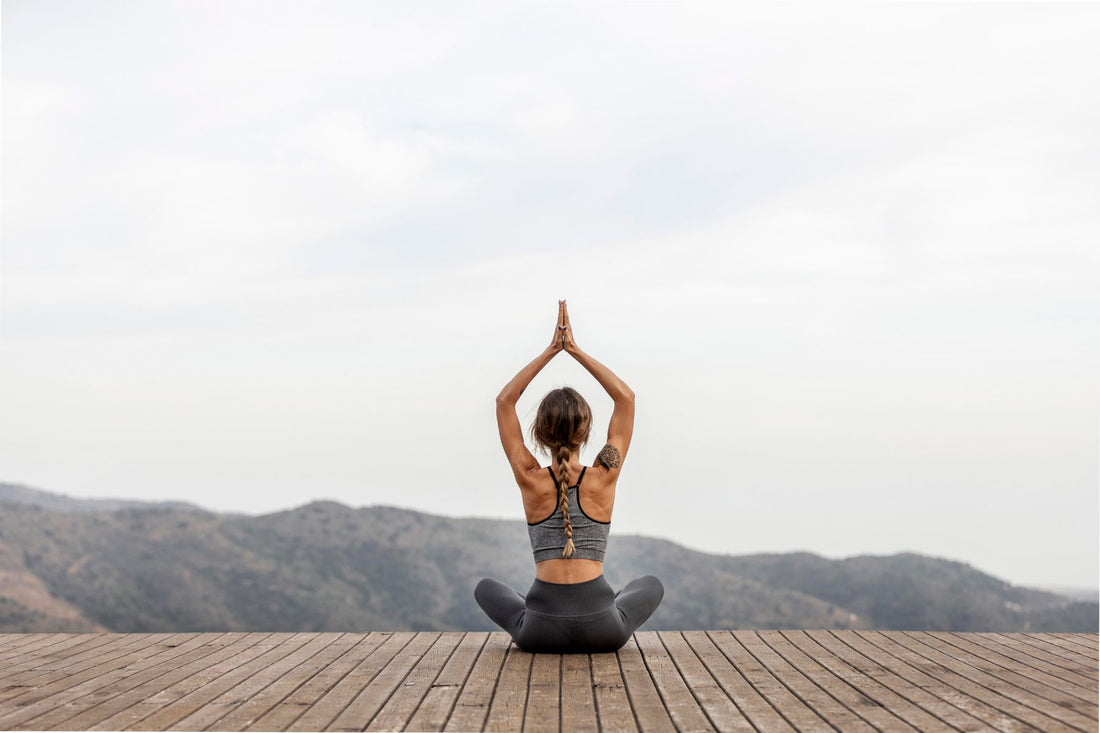
Popular Meditation Techniques for Enhanced Well-Being
Meditation is a practice that helps focus attention, relax the mind, and enhance self-awareness. Here are several common types of meditation along with detailed descriptions:
1. Mindfulness Meditation
Mindfulness meditation is a form of meditation that focuses on the present moment, aiming to enhance awareness of the current moment. Practitioners typically focus on their breath, bodily sensations, or surrounding sounds without overly engaging with or judging these sensations. The goal of mindfulness meditation is to cultivate non-judgmental awareness, thereby reducing anxiety and stress and improving quality of life.
Practice Method:
- Find a quiet place to sit or lie down and close your eyes.
- Focus on your breath, feeling the air entering and leaving your body.
- If your attention wanders, don't blame yourself; gently bring your focus back to your breath.
- Practice for 5 to 30 minutes daily.
2. Breath Awareness Meditation
Breath awareness meditation is a simple form of meditation that soothes the mind by focusing on the breath. The rhythm and depth of breathing naturally help you enter a relaxed state. This method is particularly suitable for beginners as it is easy to practice and can be done anytime, anywhere.
Practice Method:
- Sit in a comfortable position with your spine straight.
- Close your eyes and begin to notice your breath without altering its rhythm.
- Focus on the inhalation and exhalation, feeling the air entering and leaving your nostrils.
- If you find yourself distracted, don't worry; gently bring your attention back to your breath.
3. Mantra Meditation
Mantra meditation involves using specific sounds, words, or phrases (called "mantras") to focus attention. Mantras can be religious or non-religious. Repeatedly chanting or silently repeating a mantra can help stabilize the mind and reduce distracting thoughts.
Practice Method:
- Choose a comfortable position to sit and close your eyes.
- Select a mantra (such as "Om" or "Peace") and silently repeat it or chant it softly.
- Repeat the word or phrase, maintaining a consistent rhythm, and focus on its sound and vibration.
- If you become distracted, gently bring your attention back to the mantra.
4. Guided Meditation
Guided meditation involves following the voice of an instructor or a recording to lead the meditation process. This method is suitable for those who prefer guidance or need specific thematic instructions. Guided meditations can cover various themes such as relaxation, healing, or self-exploration.
Practice Method:
- Find a quiet place to sit or lie down.
- Choose a guided meditation recording, use headphones, or listen comfortably.
- Follow the instructions to relax your body and focus on the voice and imagery.
- Enjoy the meditation process with an open mind.
5. Body Scan Meditation
Body scan meditation involves focusing on sensations in different parts of the body, one by one. This method helps increase awareness of bodily tension and relaxation, promoting overall relaxation.
Practice Method:
- Lie down or sit in a comfortable position and close your eyes.
- Focus on each part of your body sequentially, from head to toe or toe to head.
- Notice the sensations in each part, such as tension, pain, or relaxation, without over-analyzing.
- Allow yourself to relax and release any tension.
6. Zen Meditation (Zazen)
Zen meditation is a form of meditation originating from Buddhism, aiming to achieve enlightenment through sitting meditation. It emphasizes correct posture and natural breathing, usually performed in silence to cultivate deep inner peace and awareness.
Practice Method:
- Sit on a cushion or chair with your spine straight, legs crossed, or feet flat on the ground.
- Place your hands on your thighs or form a "mudra," with eyes slightly open or closed.
- Focus on your breath, counting breaths (e.g., inhale 1, exhale 2), up to 10, then start over.
- Maintain attention on your breath, reducing internal distractions.
Each of these meditation methods offers unique benefits and can be chosen based on personal needs and preferences. Regardless of the method, the key is to practice regularly and maintain an open, non-judgmental attitude.
1. Mindfulness Meditation
Mindfulness meditation is a form of meditation that focuses on the present moment, aiming to enhance awareness of the current moment. Practitioners typically focus on their breath, bodily sensations, or surrounding sounds without overly engaging with or judging these sensations. The goal of mindfulness meditation is to cultivate non-judgmental awareness, thereby reducing anxiety and stress and improving quality of life.
Practice Method:
- Find a quiet place to sit or lie down and close your eyes.
- Focus on your breath, feeling the air entering and leaving your body.
- If your attention wanders, don't blame yourself; gently bring your focus back to your breath.
- Practice for 5 to 30 minutes daily.
2. Breath Awareness Meditation
Breath awareness meditation is a simple form of meditation that soothes the mind by focusing on the breath. The rhythm and depth of breathing naturally help you enter a relaxed state. This method is particularly suitable for beginners as it is easy to practice and can be done anytime, anywhere.
Practice Method:
- Sit in a comfortable position with your spine straight.
- Close your eyes and begin to notice your breath without altering its rhythm.
- Focus on the inhalation and exhalation, feeling the air entering and leaving your nostrils.
- If you find yourself distracted, don't worry; gently bring your attention back to your breath.
3. Mantra Meditation
Mantra meditation involves using specific sounds, words, or phrases (called "mantras") to focus attention. Mantras can be religious or non-religious. Repeatedly chanting or silently repeating a mantra can help stabilize the mind and reduce distracting thoughts.
Practice Method:
- Choose a comfortable position to sit and close your eyes.
- Select a mantra (such as "Om" or "Peace") and silently repeat it or chant it softly.
- Repeat the word or phrase, maintaining a consistent rhythm, and focus on its sound and vibration.
- If you become distracted, gently bring your attention back to the mantra.
4. Guided Meditation
Guided meditation involves following the voice of an instructor or a recording to lead the meditation process. This method is suitable for those who prefer guidance or need specific thematic instructions. Guided meditations can cover various themes such as relaxation, healing, or self-exploration.
Practice Method:
- Find a quiet place to sit or lie down.
- Choose a guided meditation recording, use headphones, or listen comfortably.
- Follow the instructions to relax your body and focus on the voice and imagery.
- Enjoy the meditation process with an open mind.
5. Body Scan Meditation
Body scan meditation involves focusing on sensations in different parts of the body, one by one. This method helps increase awareness of bodily tension and relaxation, promoting overall relaxation.
Practice Method:
- Lie down or sit in a comfortable position and close your eyes.
- Focus on each part of your body sequentially, from head to toe or toe to head.
- Notice the sensations in each part, such as tension, pain, or relaxation, without over-analyzing.
- Allow yourself to relax and release any tension.
6. Zen Meditation (Zazen)
Zen meditation is a form of meditation originating from Buddhism, aiming to achieve enlightenment through sitting meditation. It emphasizes correct posture and natural breathing, usually performed in silence to cultivate deep inner peace and awareness.
Practice Method:
- Sit on a cushion or chair with your spine straight, legs crossed, or feet flat on the ground.
- Place your hands on your thighs or form a "mudra," with eyes slightly open or closed.
- Focus on your breath, counting breaths (e.g., inhale 1, exhale 2), up to 10, then start over.
- Maintain attention on your breath, reducing internal distractions.
Each of these meditation methods offers unique benefits and can be chosen based on personal needs and preferences. Regardless of the method, the key is to practice regularly and maintain an open, non-judgmental attitude.
